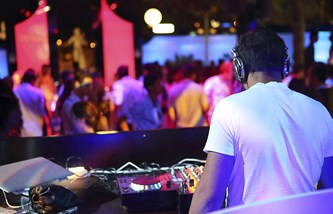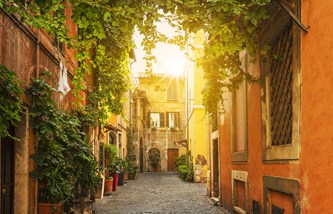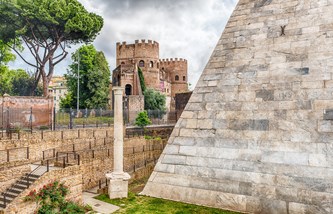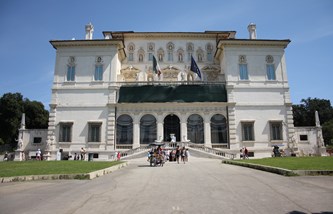Tours

Rome Tourist Card
Rome Tourist Card
Snap up the Rome Tourist Card and you'll get everything you need to explore Rome's top highlights including Colosseum, Palatine Hill, Roman Forum and Hop on/off bus. You can even choose the order you see things in.

Colosseum, Roman Forum & Palatine Hill: Priority Entrance
Colosseum, Roman Forum & Palatine Hill: Priority Entrance
Skip the long lines at the Colosseum with this priority-entrance ticket. This ticket will let you bypass the crowds. And after exploring the Colosseum you can head to the area of the Roman Forum and the Palatine Hill.
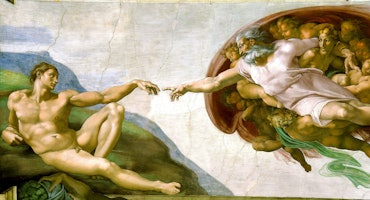
Vatican Museums & Sistine Chapel: Skip The Line
Vatican Museums & Sistine Chapel: Skip The Line
This ticket will make you save stress and time by allowing you to get priority entrance and skip the line. Visit the the countless masterpieces by Michelangelo, Raphael, Caravaggio, Tiziano and the Sistine chapel.
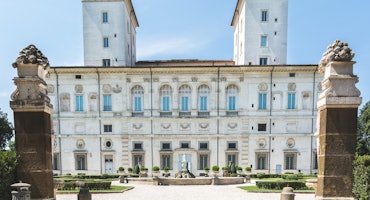
Borghese Gallery: Fast Track
Borghese Gallery: Fast Track
Galleria Borghese is located in the villa of the park Villa Borghese. Admire the architecture and furnishings of this beautiful villa. It is a museum full of art from the Renaissance. The collection includes several sculptures and paintings. Because of limited capacity get tickets for this museum weeks in advance.
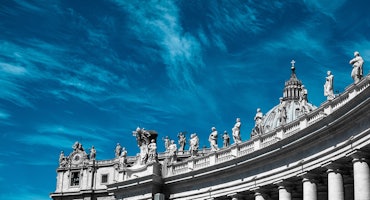
St. Peter’s Basilica: Dome Climb with Guide
St. Peter’s Basilica: Dome Climb with Guide
Get the most out of your visit to St. Peters with a guided tour to climb the basilica’s dome designed by Michelangelo and admire one of the stunning view. After the tour, you can explore the the basilica at your own pace.
Tiber Island
Whenever you take a stroll around Rome, it feels like travelling back in time. But, as this particular site confirms once again, the more you go back in time, the more history becomes mixed with myth, until the legends of the past eventually take over. Tiber Island is a place rich in history and, as you will soon discover, definitely worth a visit.
The Tiber flows through Rome bending and turning throughout the entire city. When I walk around town, it’s a constant and reassuring presence, and when I follow its course and cross its bridges, I end up in some of the most beautiful sightseeing spots. The river bends just left of the monumental center, in front of Trastevere, where its bed enlarges. Here, connected to the city by two ancient Roman bridges, rises Tiber Island, a boat shaped island, once called Insula Inter Duos Pontes, in Latin, which means “Island Between Two Bridges”. The island has a characteristic boat shape, it’s 270 meters long and 67 meters wide.

History and Myth
As with every site in Rome, this place has a long and glorious past. In fact, even its forming is shrouded in mystery. Some accounts say that during a revolt against the hated tyrant Tarquinio il Superbo, around 500 BC, its people threw sheaves of wheat in the river taken from Tarquinio’s land. This caused the forming of the island. Archaeological evidence, leads us to believe that the island is much older than that. Still, after recent excavations under the river bed, researchers have found fossilized seeds of wheat.
Is the boat shape purely coincidental? Not really. In fact, its natural formation was heavily modified by the Romans in the first century BC, who altered the form of the island with a construction technique known as opus quadratum, which consists of walls and other architectural elements made of rectangular bricks. A travertine embankment was also built around the island forming the shape of a Roman vessel, with a bow and stern at each end. To complete such an ambitious “cosmetic treatment”, a symbolic mast was also placed at the center of the island.
The mast consisted of an obelisk dedicated to Aesculapius, the god of medicine. But why was that particular deity adored on the island? Let’s take a step back to the third century BC, when a terrible plague struck Rome. In order to find a way to heal the population, the Senate consulted the Sybil, which was a corpus of books containing detailed prophecies and oracles. As suggested by the divination, the Senate decided to build a temple in honor of Aesculapius. The chosen location was Tiber Island, due to its isolation from the rest of the city. Apparently, it worked. Soon after the temple was built, the plague ended.
Today, the Temple of Aesculapius no longer exists. In 998 AD, a basilica was built over the ruins of the temple's site. The basilica, which is now known as San Bartolomeo, was commissioned by Emperor Otto III around 1000 AC and was built in honor of the martyr Adalbert of Prague. It has been completely restored in baroque style.
Among other artistic masterpieces, here you’ll be able to admire an image of the Madonna of the Lamp dated circa 1250. During one of the many river floods, the image was submerged in water, but a lamp nearby remained lit until, finally, the river came back within its banks.
Also, if you head toward the Chapel of the Sacrament, you’ll find a curious piece of war paraphernalia. During the siege of Rome, in 1849, within the context of the Italian Wars of Independence, a French army cannonball was fired through the church’s walls and into the chapel. The people inside the church at the time were miraculously unharmed. The cannonball is still there.
Today, the island's “healing” theme still remains. In 1584, the worshippers of St. John of God, built a hospital on the western area of the island. The structure is now a public hospital, managed by the council and the Catholic Church. Recent archaeological excavations, during the renovation of part of the basement of the hospital, have brought to light statues and remains of ancient shrines.
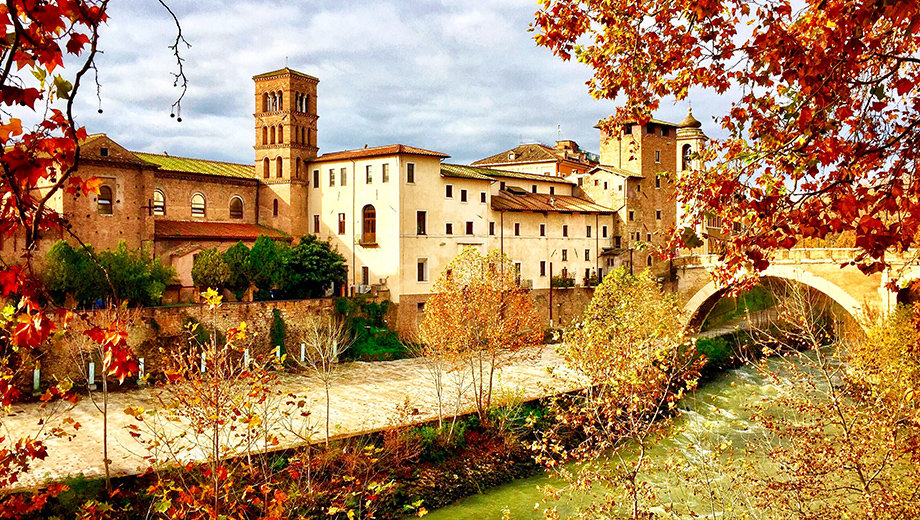
The "Boat Mast" Across Centuries
What happened to the obelisk that was placed in the middle of the island? Around 1500, after approximately 16 centuries of “distinguished service” it was dismantled and divided into three sections. These remains are now preserved in three different museums, in Naples, Paris and Monaco.
Shortly after that, where the obelisk used to stand, Romans placed a marble fluted column, which has a very peculiar story to tell. In fact, the column was known as “colonna infame” (the column of infamy) for its very specific purpose: every year, during the Easter celebrations, church authorities would put the names of the criminals and outlaws that didn’t receive holy communion nor participate in mass, on the column. Their conduct was considered incompatible with Christian spirit. It was a serious stigma for the people involved.
A famous Trastevere artist, Bartolomeno Pinelli, known for his debauchery, ended up on the list. Shortly after, the outraged artist rushed to the sacristy of the church. But, apparently, he was in no way impressed by the fact that his name was on the disbelievers’ list, and protested because, next to his name, he was defined as a “miniaturist” and not as an “engraver”! On top of that, he had a long beard, a sign of him being a sympathizer of the Jacobin groups, whom strongly opposed the Pope and the policies of the Catholic Church.
Around 1850, a chariot passing by, bumped into the column, and destroyed it. It’s not clear whether that happened on purpose or not. It has to be said, however, that the column wasn’t really loved by the people. Pope IX, commissioned another monument by the sculptor Ignazio Jacometti, which is the one you can see now. The current column features a cross on its top. On its base, Jacometti carved San Bartolomeo, S. Francis of Assisi, S. Paolino of Nola and S. John of God.
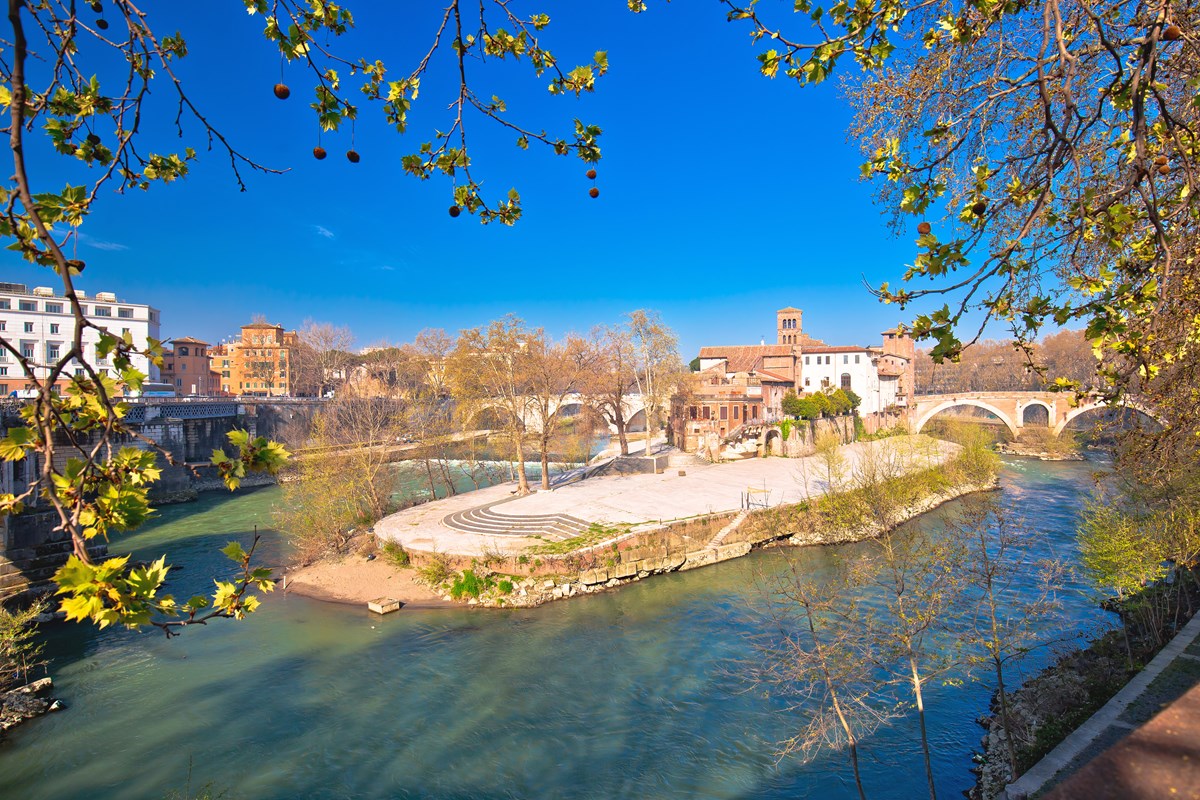
The Bridge of the Four Heads
Legend has it, that when the Ponte Fabricio, the shorter one, on the Ghetto and the Great Synagogue side, was partially restored around 1580, the Pope hired four different architects to take care of the project. But the men argued to the point that they came to blows for extremely trivial reasons.
As a punishment, when they finished their job, the Vatican sentenced them to death by beheading on this very site. Nonetheless, to pay tribute to their work (but clearly to serve as a powerful warning to the population) the Pope ordered a small monument be built, which now sits on top of the bridge, featuring four heads. Thus, there are two of those on the bridge, a total of eight heads, and that might somehow undermine this legend.
“
THE SNAKE OF THE DEITY
When a terrible plague struck Rome in the third century BC, ancient chronicles speak about an expedition that traveled up to the temple of Epidaurus, in Greece, where the most important sanctuary dedicated to the god of healing, Aesculapius, stood. When the delegation was about to leave, a snake, sacred to the deity, escaped the temple and crawled inside the Roman vessel. Then, once the ship arrived in Rome, the snake escaped again and went into hiding on Tiber Island. As the animal was sacred, Romans saw that as a sign that the island was the place where the god of healing wanted to dwell. And this is why they chose that location to build a temple dedicated to Aesculapius.
The Two Bridges
The two bridges connecting the island to the city are called Ponte Cestio and Ponte Fabricio. Ponte Cestio (which leads to Trastevere, at the right bank of the river) was originally built in 46 BC by a senator, Lucio Sestio. Only a few original parts have survived, which mainly consist of recovered materials used for various restorations over the centuries. The last renovation is dated 1892.
But, if you really want to have a taste of the genius of ancient Roman architects, just take a walk on the Ponte Fabricio, at the other end. Because it is so well preserved, it is considered to be the most ancient bridges in Rome. It was originally built in 62 BC by Lucio Fabricio, who held high office in the Roman administration. The bridge was partially restored in the seventeenth century. The bridge connects the island with the left side of the bank, towards the Ghetto and the Capitoline hill.
The other bridge visible on the island is Ponte Garibaldi, but it’s only linked on one far end of the island because of its central supporting pillar. It’s a fairly modern nineteenth century construction, completely renovated in the fifties. It’s dedicated to Giuseppe Garibaldi, a patriot and main military leader during the unification of Italy.
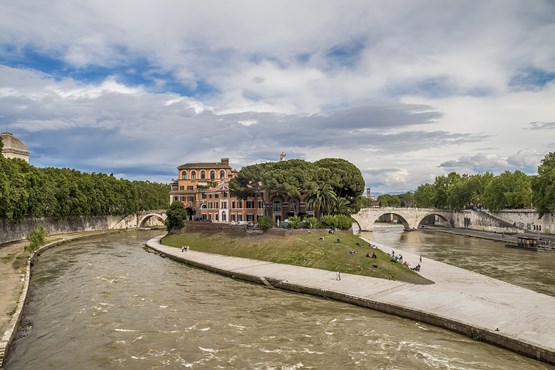
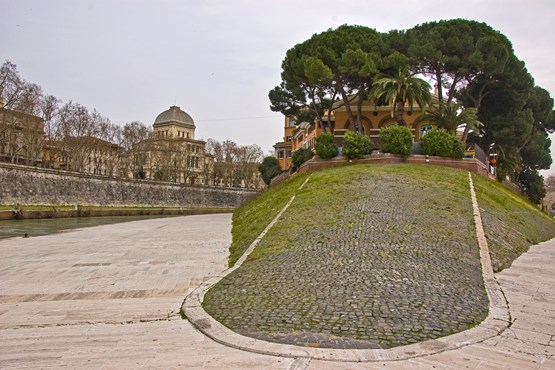
The Tiber
One thing I’ve learned when walking though Rome, is that you have to take your time to enjoy the scenery, and every special site and corner. Crossing a bridge over the river, will give you the chance to enjoy some of the most beautiful views in Rome and take beautiful postcard pictures, especially at sunset, when the city lights up, but there is still some natural glow in the sky, streaked with dreamy shades of orange and pink.
The river Tiber is commonly known as “the blonde Tiber” because, since ancient times, the current mixed the water with the sandy bed, giving it its characteristic color. The river cuts Rome in half, and, when you come here, you’ll find yourself often crossing the water on one of the many bridges along its banks. Over the centuries, the bridges have been used not only to connect the two sides of the town, but also as a defensive bulwark during the wars. The oldest bridge ever built is Ponte Milvio, whose original construction dates back to 400 BC, whilst the most modern, an ambitious construction in steel and reinforced concrete called the Bridge of Music, was completed in 2011.
Isola del Cinema (Movie Island)
This is the name of the festival that, every summer, from July to September, brings the best movies, new releases and auteur cinema to the magnificent natural setting of the island banks. The island becomes the epicenter for cinema lovers and industry professionals, such as movie directors and actors.
Where to Eat
Right on the island, on the tiny Via Ponte Quattro Capi 16, just off the Fabricio Bridge, there is one of the most amazing destinations you can encounter when it’s time for a tasty meal. We’re talking about the restaurant Sora Lella, which opened in 1940 and offers authentic and genuine Roman cuisine.
The original owner, Elena Fabrizi (known as “Lella”), was a cook and an actress, known for famous roles and funny cameos up to the ‘80s. She was the sister of one of the most famous Italian actors: Aldo Fabrizi. She was such an iconic character, that she became the symbol of a certain Roman spirit, made of famous film directors, cozy taverns, charme and carbonara, movie sets and the magical sunsets on the river banks. The restaurant is now managed by her son.
FAQ
What can I see on Tiber Island?
The Church of San Bartolomeo is on Tiber Island. You’ll also have the chance to walk on two of the most ancient bridges in Rome.
How do I get to Tiber Island?
You can arrive from Trastevere or from the other side (the Ghetto). The bus routes to get here are number 8, 23, 63 and 280.
Does it cost money to visit Tiber Island?
No, it doesn't cost any money to visit Tiber Island.
When is the film festival held on Tiber Island?
The film festival (Isola del Cinema) is usually held from the beginning of June to mid September.
Is Tiber Island the only island on the river?
No, there is another island near the town of Fiumicino, in the proximity of the river mouth, called Isola Sacra.
